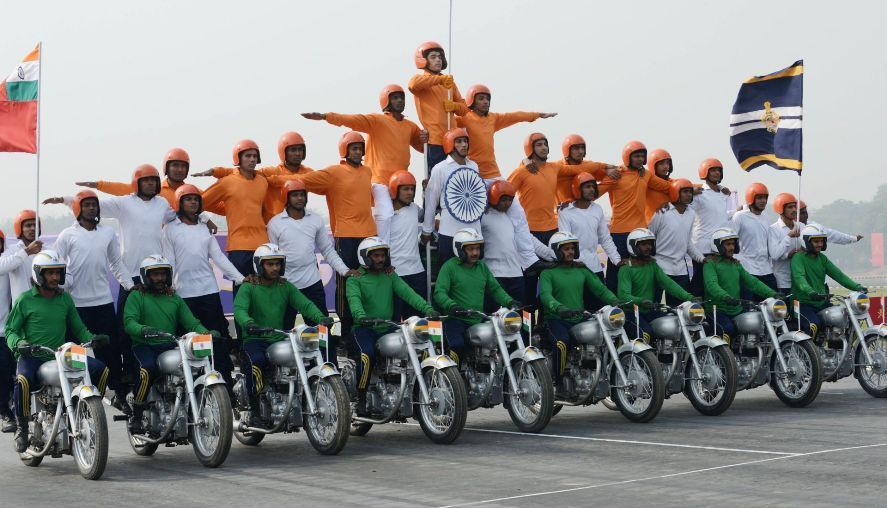History Of Royal Enfield With The Indian Army
Modified On Oct 30, 2018 By Naveen Soni for Royal Enfield Bullet 350 (2019 - 2023 )
- 23597 Views
‘Royal Enfield’ and ‘Bullet,’ these names are not new for the armed forces. In fact, they have been derived from the company's links with the Royal Small Arms Factory in Enfield, London. Being one of the oldest motorcycle manufacturers, Royal Enfield has supplied bikes for dispatch riders during the Second World War. However, their history with the Indian Army started in 1949, when the government ordered Royal Enfield Bullets for border patrol use. Since then, Royal Enfields has maintained a relation with the Indian Army and they got another identity in the country as military bikes.

Earlier, the Indian Army was using Triumphs and BSAs which had many mechanical drawbacks and a high rate of wear & tear. So, these motorcycles were declared redundant and the Government floated tenders for new motorcycles. Apart from supplying durable, reliable and better-performing motorcycles, another condition laid down was that, at a later stage, the production of the bikes had to occur in India. In this way, the Government would be able to supply motorcycles to the army while promoting industrialisation in India. The British manufacturer agreed to the terms and conditions of the tender and presented the 350cc, 4-stroke Royal Enfield Bullet.

When the Indian Army officers tested the bike, they felt it was way better than the previous machines. The British manufacturer got its first order from the Indian government and decided to open a factory in Madras (now Chennai). Some of the bikes delivered were put to patrol the Indo-Pak border in Punjab. This region was a cultivable area, hence comprised of a lot of flat lands and such topography made riding the Bullet pleasurable.

In 1955, Royal Enfield partnered with Madras Motors in India to form Enfield India and started assembling the bike locally in the country. The 350cc Bullets were sent from the Redditch factory in kits for assembly at the Madras plant. Soon, the tooling was sold to Enfield India so that they could also manufacture components locally. By 1962, the Bullet used in the country was completely made in India. However, the 1955 model remained almost unchanged for years and Madras produced over 20,000 Bullets annually. Some changes were made to the gear ratios in 1959, however, these were not incorporated by the Indian arm due to its commitment to supply the Indian Army.

Royal Enfield's relation with the Indian Army was growing with time and, after a few years, the company also started manufacturing 500cc bullets in India. In 1990, Royal Enfield collaborated with the Eicher Group, an Indian automotive company. In 1994, Eicher fully acquired Royal Enfield and the Redditch company became an Indian company. After that the company started working on the mechanical advancement and upgradation the bikes. Royal Enfield was not doing well in the market when it was acquired by the Indian firm. However, the strategies of its new CEO Siddhartha Lal worked and the company restarted its progress. New models were also introduced and today it is one of the most profitable companies in the market.

After 1990, other two-wheeler manufacturers also started introducing more advanced products in the Indian market. However, the Indian Army stayed with Royal Enfield and is still using its motorcycles. A relationship of so many years with a team serving the nation at its best adds a patriotic value to the brand as well. You can also see Indian soldiers using Royal Enfield bikes for amazing stunts on auspicious occasions like the Republic Day parade. The reputed Sweta Ashwa team of the Indian Army also holds the Guinness Record for balancing 48 people on a 500cc Royal Enfield, shattering the previous record of Brazil's Army Corp in the process.

So, let's cheer for the relationship between the Indian Army and Royal Enfield, and celebrate this Independence Day.
